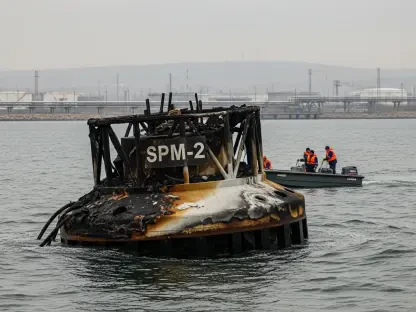Kicking off with a striking fact, Sempra, a San Diego-based energy infrastructure titan, reported an adjusted third-quarter profit of $1.11 per share, shattering analyst expectations of 91 cents, a performance driven by aggressive grid expansion in Texas and strategic cost-cutting in California. This remarkable achievement has sparked widespread discussion in the energy sector about its implications for the industry at large and how different stakeholders are interpreting Sempra’s moves. This roundup gathers diverse opinions, tips, and analyses from industry observers, financial analysts, and utility professionals to dissect the implications of Sempra’s success and its broader impact on energy infrastructure trends.
Diving into Sempra’s Financial Feat: Varied Perspectives
Texas Grid Growth: Oncor’s Expansion Under the Spotlight
Industry watchers have been quick to highlight the pivotal role of Sempra’s Texas utility, Oncor, in driving the company’s standout results. Many point to the staggering 60% year-over-year increase in interconnection requests for industrial and data center projects in North Texas as a clear indicator of booming demand. Analysts generally agree that Oncor’s ambitious $36 billion capital plan for the coming years signals a robust commitment to meeting this surge, with some suggesting that this level of investment could set a benchmark for other utilities in high-growth regions.
However, not all feedback is uniformly positive. Certain infrastructure specialists caution that such rapid expansion, while profitable in the short term, may strain existing systems if not paired with meticulous planning. Concerns linger around potential regulatory hurdles or delays in project approvals, which could slow momentum. A common tip from these experts is for companies like Sempra to prioritize scalable solutions and engage early with local authorities to mitigate risks.
Another angle comes from financial commentators who emphasize the long-term payoff of Oncor’s projected 30% spending increase over the next few capital cycles. They argue that this forward-thinking approach positions Sempra as a leader in addressing industrial energy needs, particularly for data-heavy sectors. Their advice to investors is to closely monitor how these capital expenditures translate into sustained revenue growth, suggesting a cautious but optimistic outlook.
California Efficiency: Cost-Cutting Strategies Debated
Turning to Sempra’s operations in California, opinions vary widely on the cost-saving measures implemented by subsidiaries San Diego Gas & Electric (SDG&E) and Southern California Gas Co. (SoCalGas). Utility consultants commend the projected savings of over $300 million from 2026 onward, achieved through program cuts and a shift to digital-first models. Many see this as a pragmatic response to stringent state regulations, with some recommending that other utilities adopt similar tech-driven efficiencies to reduce overhead.
On the flip side, customer advocacy groups, as reflected in broader industry discussions, express apprehension about the real-world impact of these changes, such as branch office closures at SoCalGas. Critics argue that reduced physical access might alienate certain customer segments, potentially leading to dissatisfaction. A frequently mentioned tip from this perspective is for Sempra to invest in robust communication channels to ensure digital transitions do not compromise service quality.
Financial analysts offer a middle ground, noting that while cost reductions strengthen Sempra’s balance sheet, balancing customer expectations with regulatory compliance remains a tightrope. Their consensus leans toward applauding the modernization drive but urges continuous evaluation of public response. Some suggest that transparent reporting on savings and service outcomes could help build trust among stakeholders.
LNG Ambitions: Infrastructure Projects Stir Mixed Reactions
Sempra Infrastructure’s bold steps, including the final investment decision on Port Arthur LNG Phase 2 and progress on six major projects across North America’s coasts, have drawn significant attention. Energy market observers largely view these developments as timely, given the rising demand for liquefied natural gas (LNG) in global supply chains. Several experts tip their hats to Sempra’s strategic focus on regional energy needs, recommending that competitors take note of how infrastructure can be leveraged for market expansion.
Contrasting views emerge from environmental analysts who question the long-term viability of heavy LNG investment amid global market volatility and increasing scrutiny on carbon footprints. They warn that external pressures, including shifting policy landscapes, could disrupt projected gains. A recurring piece of advice is for Sempra to diversify energy portfolios, integrating renewables to hedge against potential downturns in fossil fuel markets.
Economic strategists provide a different lens, focusing on how these projects bolster North America’s energy security. They argue that Sempra’s coastal initiatives could reshape trade dynamics, positioning the company as a key player. Their guidance to industry peers is to explore partnerships that enhance project funding and risk distribution, ensuring stability in ambitious endeavors like these.
Financial Restructuring: Stake Sale Sparks Strategic Debate
The planned sale of a 45% stake in Sempra Infrastructure Partners to KKR affiliates has generated a spectrum of reactions. Corporate finance experts largely endorse this move as a smart play to simplify business structure and fortify financial health. Many compare it favorably to similar restructuring efforts by industry peers, suggesting that the freed-up capital could fuel accelerated growth in other areas. A common tip is for companies to pursue such divestitures with clear reinvestment plans to maximize value.
Skeptics within the investment community, however, raise questions about whether this shift might dilute focus on core infrastructure goals. Some argue that offloading significant stakes could introduce new complexities in partnership dynamics. Their advice centers on maintaining strategic alignment with new stakeholders to avoid operational friction, emphasizing the need for detailed post-sale integration plans.
A third perspective from market analysts highlights the uniqueness of Sempra’s pivot, noting that it avoids overlap with traditional operational focuses. They see this as a potential model for resilience, especially in a competitive energy landscape. Their recommendation to investors is to track how Sempra deploys the proceeds from this transaction, as it could signal broader trends in utility sector restructuring.
Key Takeaways: Industry Implications from Sempra’s Performance
Across the board, Sempra’s third-quarter success, marked by a 2% premarket stock boost, has resonated with industry stakeholders as a testament to strategic agility. Analysts and utility professionals alike underscore the importance of balancing aggressive expansion, as seen in Texas, with operational streamlining, evident in California. A shared tip is for companies to adopt digital tools and data-driven decision-making to enhance efficiency without sacrificing customer trust.
Differing views on LNG expansion and financial restructuring reveal a nuanced landscape where growth must be tempered with adaptability. Many suggest that energy firms monitor Sempra’s capital plans and regional strategies as a barometer for market shifts. A practical takeaway for investors is to evaluate how regulatory compliance and public perception interplay with bold investments, ensuring a holistic view of potential risks and rewards.
Reflecting on Sempra’s Path: Actionable Steps Forward
Looking back, the discussions around Sempra’s third-quarter performance painted a vivid picture of a company navigating complex regional and financial challenges with notable success. The diverse insights gathered underscored a critical balance between expansion and efficiency that shaped industry conversations. Moving forward, stakeholders can take inspiration by prioritizing early regulatory engagement to smooth out growth initiatives. Another actionable step involves exploring hybrid energy solutions to address environmental concerns while capitalizing on infrastructure opportunities. For those keen to delve deeper, keeping an eye on how Sempra reinvests capital from strategic sales could offer valuable lessons in long-term resilience within the ever-evolving energy sector.









